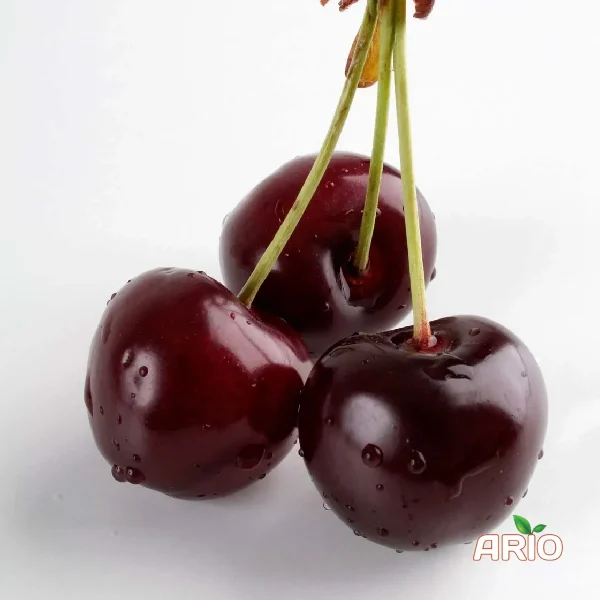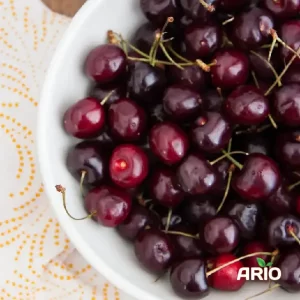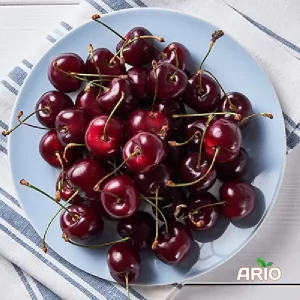
Fresh Cherries
Iran, with its long-standing agricultural tradition, plays a key role in the international cherry market. Thanks to its varied climates and fertile soil, the country grows a wide range of cherry varieties that meet both local and global preferences. This article provides a detailed look into Iran’s cherry industry, covering its popular cultivars, harvest seasons, packaging practices, export logistics, and market potential.
Iranian Cherries: A Comprehensive Overview for Global Importers
Major Cherry Varieties Grown in Iran
Iran is home to an impressive array of cherry types, each offering distinct colors, flavors, and textures:
Tak Daneh (Mashhad Cherry)
Known for its deep red color and naturally sweet taste.
White Cherry from Urmia
A rare, pale-colored variety with a subtle, delicate flavor.
Urmia Red Cherries
These are valued for their bright red color and balanced sweetness.
Qazvin Black Cherry
A darker cherry with a bold, rich flavor profile.
Regional Red Cherries (Neyshabur, Shahryar, Karaj, Lavasan)
These regions yield cherries that offer a mix of sweetness and tanginess, making them suitable for various markets.
This diversity allows Iranian growers to cater to a wide range of consumer tastes around the world.

Cherry Harvest Timeline by Region
Harvest times in Iran vary depending on location and variety, which provides a strategic advantage in supply management:
Oshnavieh (West Azarbaijan Province)
Harvesting typically starts in late June and may continue into September.
North Khorasan Province
Cherries are usually picked from early June through mid-July.
These varying schedules help ensure a consistent supply window over several months, ideal for international distribution.
Export Packaging and Logistics
Iranian cherries are prepared for export using professional packaging and temperature-controlled logistics:
Packaging Options
Cherries are sorted and packed in various formats based on the buyer’s specifications, protecting them during transport.
Cold Chain Transportation
Refrigerated shipping is commonly used to preserve the cherries’ freshness, flavor, and texture throughout their journey.
Efficient packaging and logistics contribute to Iran’s growing reputation for delivering premium quality produce globally.

Quality Certifications and Compliance
To meet international market requirements, many Iranian cherry producers secure industry-standard certifications:
Good Agricultural Practices (GAP)
These assure buyers that cherries are grown with a focus on food safety, sustainability, and traceability.
Organic Certification
Some growers also offer organically certified cherries, responding to growing global demand for chemical-free produce.
These certifications help build trust with buyers and open doors to premium markets.
Global Demand and Export Markets
Iran’s cherry exports continue to grow, supported by increasing demand in foreign markets:
Key Markets
Iranian cherries are primarily exported to neighboring countries and emerging markets, often reaching destinations in Europe and Asia.
Export Challenges
Despite promising growth, exporters face logistical and infrastructure challenges that can affect the efficiency and scale of shipments.
Nevertheless, the quality and availability of Iranian cherries keep them competitive in the global fruit trade.
Why Choose Iranian Cherries?
Iranian cherries offer several advantages that make them attractive to importers:
Wide Variety Selection
A rich assortment of cultivars allows importers to select according to taste preferences and seasonal demand.
Extended Harvest Season
Regional diversity allows staggered harvesting, helping maintain a steady supply over months.
Strict Quality Standards
Compliance with global certifications ensures reliable quality and safety.
These benefits position Iranian cherries as a top-tier option for importers seeking quality and variety.
Frequently Asked Questions (FAQ)
1. Which cherry varieties are commonly exported from Iran?
Iran exports several varieties, including Tak Daneh, White Cherry of Urmia, Urmia Red Cherry, Qazvin Black Cherry, and various regional red cherries.
2. When does cherry harvesting take place in Iran?
Harvesting typically occurs from early June to September, depending on the region and variety.
3. How are cherries prepared for export?
They are carefully sorted and packed in customized packaging, and transported using refrigerated containers to maintain freshness.
4. What certifications support the quality of Iranian cherries?
Many producers hold certifications like GAP and organic, ensuring safety, traceability, and quality.
5. Where are Iranian cherries exported?
They are exported to a range of countries across the region and beyond, particularly those with high demand for sweet cherries.









